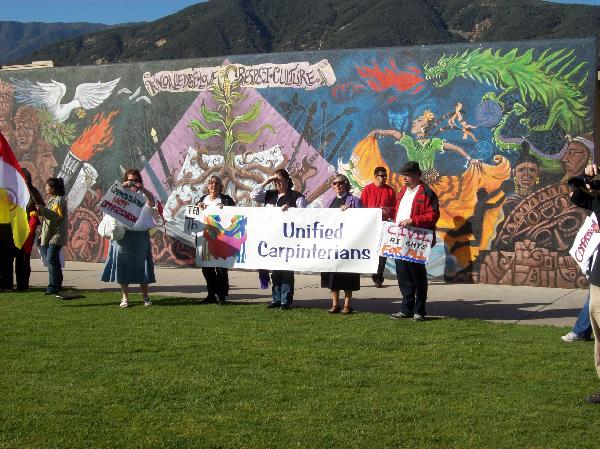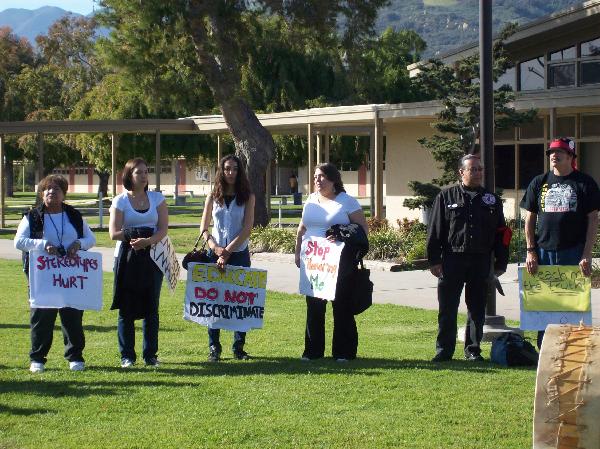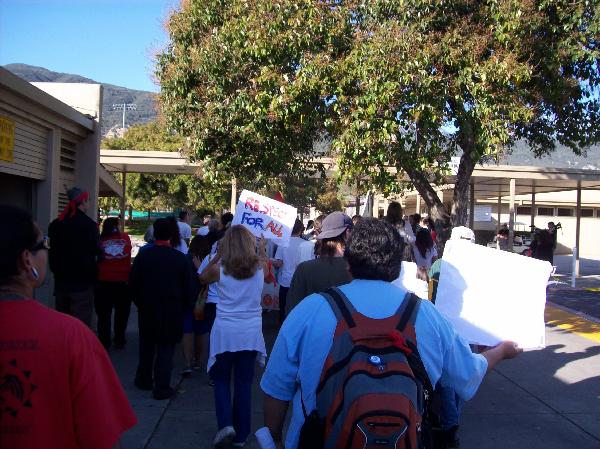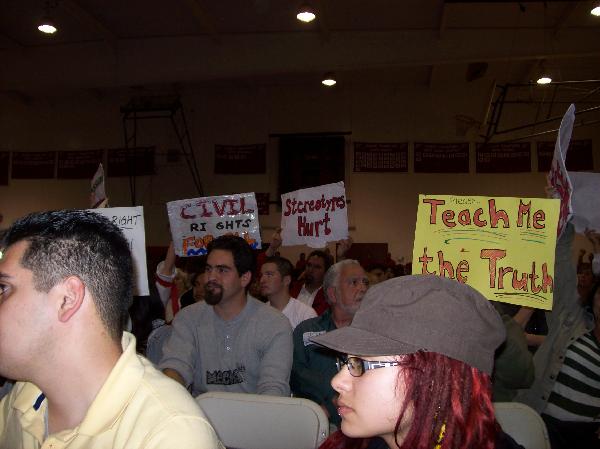| About Us | Contact Us | Calendar | Publish | RSS |
|---|
|
Features • latest news • best of news • syndication • commentary Feature Categories IMC Network:
Original Citieswww.indymedia.org africa: ambazonia canarias estrecho / madiaq kenya nigeria south africa canada: hamilton london, ontario maritimes montreal ontario ottawa quebec thunder bay vancouver victoria windsor winnipeg east asia: burma jakarta japan korea manila qc europe: abruzzo alacant andorra antwerpen armenia athens austria barcelona belarus belgium belgrade bristol brussels bulgaria calabria croatia cyprus emilia-romagna estrecho / madiaq euskal herria galiza germany grenoble hungary ireland istanbul italy la plana liege liguria lille linksunten lombardia london madrid malta marseille nantes napoli netherlands nice northern england norway oost-vlaanderen paris/Île-de-france patras piemonte poland portugal roma romania russia saint-petersburg scotland sverige switzerland thessaloniki torun toscana toulouse ukraine united kingdom valencia latin america: argentina bolivia chiapas chile chile sur cmi brasil colombia ecuador mexico peru puerto rico qollasuyu rosario santiago tijuana uruguay valparaiso venezuela venezuela oceania: adelaide aotearoa brisbane burma darwin jakarta manila melbourne perth qc sydney south asia: india mumbai united states: arizona arkansas asheville atlanta austin baltimore big muddy binghamton boston buffalo charlottesville chicago cleveland colorado columbus dc hawaii houston hudson mohawk kansas city la madison maine miami michigan milwaukee minneapolis/st. paul new hampshire new jersey new mexico new orleans north carolina north texas nyc oklahoma philadelphia pittsburgh portland richmond rochester rogue valley saint louis san diego san francisco san francisco bay area santa barbara santa cruz, ca sarasota seattle tampa bay tennessee urbana-champaign vermont western mass worcester west asia: armenia beirut israel palestine process: fbi/legal updates mailing lists process & imc docs tech volunteer projects: print radio satellite tv video regions: oceania united states topics: biotechSurviving Citieswww.indymedia.org africa: canada: quebec east asia: japan europe: athens barcelona belgium bristol brussels cyprus germany grenoble ireland istanbul lille linksunten nantes netherlands norway portugal united kingdom latin america: argentina cmi brasil rosario oceania: aotearoa united states: austin big muddy binghamton boston chicago columbus la michigan nyc portland rochester saint louis san diego san francisco bay area santa cruz, ca tennessee urbana-champaign worcester west asia: palestine process: fbi/legal updates process & imc docs projects: radio satellite tv |
printable version
- js reader version
- view hidden posts
- tags and related articles
Carpinteria to Retain Plains Indian Mascotby RP Saturday, Mar. 21, 2009 at 5:02 PMLast year, Elias Cordero, a Native American student of Carpinteria High School, began a campaign to have the school mascot changed. The image depicts a plains Indian with facial features that offend many Native Americans. On March 17, 2009, the school board voted to keep the mascot, but two items will be removed from the campus.
Last year, Elias Cordero, a Native American student of Carpinteria High School, began a campaign to have the school mascot changed. The image depicts a plains Indian with facial features that offend many Native Americans. Other imagery representing the school team (i.e., the Carpenteria Warriors) contains feathers, sacred “religious tools” for Indians.
Last spring, the Carpinteria School Board voted to change the mascot--but many in the community protested, citing among other things, the fact that local indigenous people are not offended by the sports imagery and questions about the composition of the school board at that time. On March 17, 2009 the issue was again brought before the school board. The meeting, which was attended by hundreds of people, was fiery and impassioned and lasted for about three hours. The first two hours were open for public comment. Ultimately, the board voted 3-2 to retain the mascot, although two items, including a doormat with a “Native American” on it, will be removed. Everything else, including a bust at the school parking lot entrance and a large mural are to remain intact. The months, weeks, and days preceding the meeting were intense. Eli, the instigator of this campaign, received death threats as did a child of a school board member. The American Indian Movement West (AIM West), which supported Eli, was criticized on various counts, including their support of Leonard Peltier: From Jeff Moorhouse: “For the past 30 years, AIM has actively engaged in supporting the release of Leonard Peltier from Levenworth prison. Mr. Peltier is serving a life sentence for the execution style murders of 2 FBI agents in the 1970’s. AIM considers him a political prisoner of the Federal Government. This certainly weighs on the credibility of Corine Fairbanks and Ashleigh Brown. I find it disgusting that members of our community would associate with an organization that supports murderers. Apparently Miss Fairbanks and Miss Brown feel differently. Research the case.” (Indeed, if one researches Leonard Peltier, they will find that he was a nominee for the Nobel Peace Prize and this comprehensive film which calls into question the legitimacy of Peltier's “trial” and the activities of the FBI: http://blogs.myspace.com/index.cfm?fuseaction=blog.view&friendId=1504245&blogId=465349904.) Additional Background information can be found here: http://www.aimwest.info/. The meeting on March 17 took place in Carpinteria High's gym. The acoustics was a persistent problem, but the moderator said it was the only place that would hold the large number of people that were expected. Many indigenous people who reside in Carpinteria expressed approval of the mascot. However, a Chumash man, while not a Carpiterian, said that this land was originally their's and that his people were and are peaceful, not warriors. “. . . We have to change the war mentality,” he said. “We are not warriors, we are peaceful people, and this planet needs peaceful beings. This is a local manifestation of a terrible global bind that we all live in. Injustice to one is injustice to all. The war culture must be eliminated. “Your job is to teach to these young people. Teach them the ways of the Chumash by asking the Chumash. And I invite all the people in the lineage of the Chumash to come and practice the Chumash ways. We were never a warrior society, never. We're not warriors.“ Throughout the evening, Carpiterians of multiple ethnicities who supported the mascot, openly resented outsiders getting involved in what they feel is a community issue. For example, one man said: “Most importantly, this is a local issue. Outside agitators have tried to turn it into a major spectacle. While they have the right to express their views, the outcome will have no effect on their lives. They will return home and wait to be told by their organizers where to go next to create havoc. [Another statement of his was inaudible due to poor acoustics in the gym, a pervasive problem throughout the meeting].” The pro-mascot side was not devoid of “outsiders.” Luisa, a woman from Echo Park with both Zuni and Mexican indigenous lineage, said that people “are being side-tracked” by this imagery when the real discrimination is social-economical. She added that “as a Mexican Indian, I acknowledge my Indian roots—American Indians don't. To be a warrior is a proud thing. . . .” (People in her neighborhood call her “Warrior Woman.”) An African American man, who grew up in Carpenteria--and when he first moved to Carpinteria from Compton as a small child, he wondered where all the other black people were—said that being a Carpinteria Warrior had profound effects on his life. Among the many examples he cited was learning how to persevere despite fatigue and overwhelming odds and caring for fellow teammates. Yet, he said he would feel terrible if he was a part of something that was considered racist by anyone. Those opposing the mascot underscored that the icon was conceived at a time when Native Americans and other people of color were not allowed to attend Carpinteria High. They said this brought into question claims that the mascot honors Native Americans. One Native American speaker stated that the success of a sports team is spiritual and is not due to a physical object. On another occasion, a man gave a brief but detailed history on mascots and racism: “I'm representing the American Indians [inaudible] of Cal State Northridge. Yes, I'm one of the outsiders. Not only that but I'm Native American, so I'm two outsiders. “I am doing my thesis on American Indian mascots and racism in sports. The question I am [asking] is why are Native Americans used as mascots? Is it because we've always had these sports? No, sports started in the 1880s. Indian mascots didn't appear until the 1910's-1920s. Why is this? It's because of a thing called colonization. Colonization occurs when a nation or a race conquers another country, and they and take the land away from the people. You either exterminate the people or assimilate them into your culture. [Y]ou take their culture, take their religion, take their customs, trivialize them, turn them into meaningless objects. [Inaudible sentences.] “. . . Advertisers started using Indian names and mascots in marketing. You see them [inaudible word] butter out of New Jersey. It's a marketing ploy. Hollywood continued to complete the homogeneous identity of the Native Americans. It took 600 different nations and made them look like one. The plains Indians from the 1870s represents all American Indians now. “Yes, I may be an outsider, but what happens affects other communities. When your teams go to play other teams, [you see] signs saying 'Stop the warriors' with pictures of Indians. . . . Does this affect people? According to the Federal government, these images do affect children. In their case against involving Joe Camel, they said the negative images affects on children. The NCA outlawed all Native American imagery. If you watch [inaudible word] event this weekend, there will be no Indian mascots dancing around at halftime, you will see no Indian stuff on the teams. “Why? What does this really do? It's called victimization. Statistics have shown that most violence occur within race: White against White, Black against Black. However, violence against most Native Americans comes from outside other races. Why is this? These images perpetuate a savage, fighting violence which in turn incurs people to fight them. So it does bring on violence against Native Americans, it does diminish self-esteem of Native American children when they go and see cartoons of their forefathers [inaudible words]. “So when you say you're honoring something, what you're honoring is the colonization and destruction of a race. . . . “ Eli Cordero, the student who initiated the campaign to remove the mascot, was the subject of personal attacks. One speaker said that he is not even a full-time student and not even a full-blooded Chumash. Vincent, a Sophomore at Carpinteria High, described Eli as “an attention-hungry student who only attended two periods of school a day.” He also brought into question the respect, or lack thereof, to the American flag on signs used by opponents of the mascot, who themselves complain about disrespect. At one point, the meeting was briefly interrupted as violence apparently broke out just outside the building's entrance. It was not clear what was going on. The facilitator of the meeting told everyone to remain seated and that the sheriff was dealing with the problem. Another proponent for the mascot and resident of Carpinteria since 1958, disputed a statement, attributed to Corine Fairbanks of AIM West, that local Natives who support the mascot have become compliant to the dominant culture a la victims of domestic violence succumbing to their abusers. “So does this make the people of Carpirentia batterers,” she asked. “If you knew anything about the people of Carpinteria, you would know that this is not true.” She added, “Let's make this an educational experience rather [than] a fight about who's right and who's wrong.” As was noted earlier, sacred symbols featured on logos for the Carpinteria Warriors have been an issue, too. A Native American woman from Sunnyvale said: “Our spiritual tools, like the cross, are for our prayer only. Even these feathers up here that we see [indicating a banner for the Carpinteria Warriors] bring pain to my heart. I would not have a cross unless it was a private school.” Various mascot supporters pointed out the cost of this ongoing process and the cost of replacing the mascot at a time when school funding is in such dire straits. However, people opposing the mascot said they are willing to remove the imagery for free. One speaker was discussing the history of atrocities committed against Native Americans when another person shouted, “The war is over!” One of the last people to talk drew parallels between statements made by supporters of the mascot and people who opposed Martin Luther King, Jr. and th civil rights movement in the White South. At that time, supporters of civil rights were called “outsiders,” their grievances were dismissed, and death threats were made. After the school board voted to retain the mascot, various voices in the audience promised, “We'll be back.” The next day, in a written statement, Corine Fairbanks said: “We have been advised by many elders, and those with much more experience than us, that what happened last night would happen. We all know that anger & fear, in all of its forms - erupt whenever someone challenges the idea, the concept, that Native Americans are not mascots and our sacred items are not for thier mockery or marketing tactics. The fact that 2 items will be removed is a small victory. “This small victory leads to more steps in educating, outreaching, networking and organizing to Native and non-Native people, business, organizations, and schools to work with the Coalition Against Racism in Education to remove the offensive Carpinteria imagery. We understand that it took the LA Unified School District almost 10 years to ban Native American mascots and imagery, but it was accomplished. We have no doubt, that this will be accomplished as well.” A rather long list of mascot changes in U.S. schools—going back to 1969—can be found here: http://www.jayrosenstein.com/pages/honormascots.html
Report this post as:
Banner and signsby RP Saturday, Mar. 21, 2009 at 5:02 PM
error
Report this post as:
AIM flagby RP Saturday, Mar. 21, 2009 at 5:02 PM
error
Report this post as:
On the lawn in front of Carpinteria Highby RP Saturday, Mar. 21, 2009 at 5:02 PM
error
Report this post as:
Walking to the meetingby RP Saturday, Mar. 21, 2009 at 5:02 PM
error
Report this post as:
A few of the audience membersby RP Saturday, Mar. 21, 2009 at 5:02 PM
error
Report this post as:
|








